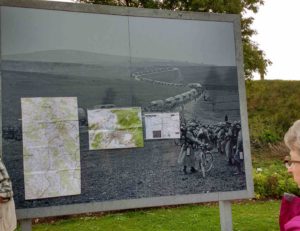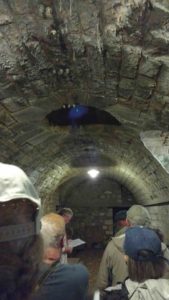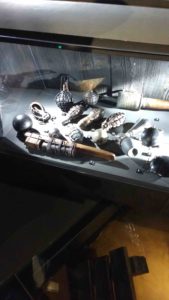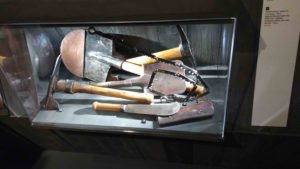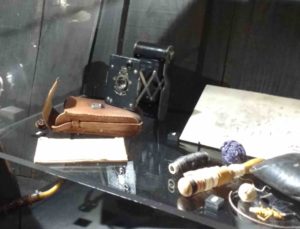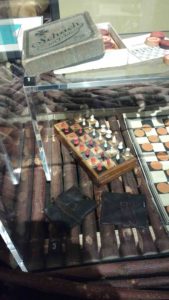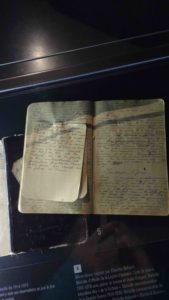Travel, World War I »
Clinging to sanity at Verdun
November 16, 2017 | Comments Off on Clinging to sanity at Verdun | Betsy Woodman
Verdun. For many Frenchmen, the ten-month battle that took place here from February to December, 1916, symbolized the whole Great War. Verdun was where the Germans aimed to “bleed the French white” and where the French vowed, “they shall not pass.”
Like much of the Western Front, the area of Verdun is consecrated to teaching about and memorializing the first World War. Here, our group stopped at an information board telling about the “Voie Sacrée”–the “Sacred Way” that fed troops and supplies up to the battle area. Now tour buses make their way along that road, but a hundred years ago, it was clogged with trucks, ambulances, horses, and foot soldiers.
We also roamed the tunnels of Fort Douaumont, which was captured early on by the Germans and finally retaken by the French, at the cost of tens of thousands of lives.
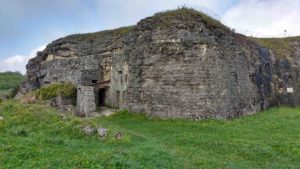
The pitched fighting at Verdun, according to archaeologist Matthew Leonard, resulted in “the highest density of dead per square yard in the history of warfare.” Nine villages surrounding the town were totally destroyed, never to be rebuilt.
The museums of the area present a huge array of the material culture of the war, including tanks, planes, machine guns–and these deceptively small hand grenades.
Soldiers had to carry the ever-important entrenching tools.
But they also managed to stuff small personal items in their rucksacks, things that would help them repair their clothes, pass the time, record the experience, and try to stay sane as they awaited orders to go “over the top.”
Items such as a small folding camera, a sewing kit, a sketch pad, chess and checkers sets.
And perhaps most importantly, diaries, including this one that speaks of the “unbearable smell,” “nights of anguish,” and, worst of all, the thirst that literally drove the combatants insane when the water supply gave out.
So much has been written about World War I, you’d think there would be nothing more to say. But archaeologists continue to explore the battlefields. Museum developers continue to present and interpret material to the public in brilliant new ways. The tourist industry does their bit, too, to teach one of the greatest object lessons on the planet–just what can happen when human affairs go wrong. Really wrong.

